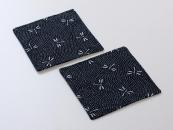- Customer Appreciation
- Tencha - Pure Elegant Flavor
- Iced Tea Recipes
- Four Seasons of Green Tea
- Green Tea for Health
- How to Enjoy Green Tea
- History of Green Tea
- Benefits of Matcha
- Japanese Tea Ceremony
- Organic Tea Farm
- Celebration Gifts in Japan
- Choosing a Japanese Tea
- Choosing Tea Ware
- Traveling around Uji
- Shincha News Flash
- RAKU YAKI - Avantgarde to Tradition

- Customer AppreciationIncluded FREE with all orders for 2,400 customers

- Tencha (Limited)Quite unique, pure, noble, and elegant flavor

- Shincha Matcha (Limited)Feel delight of the spring season, inspired by fresh flavor

- Tencha - Pure Elegant FlavorEnjoyed in secret among only a few Matcha manufacturers

- Summer Elegant Yunomi & Matcha BowlModern sophisticated / traditional handcrafted

- [Limited] Snacks & Candy (Summer)Premium, Traditional & Modern

Teapots & Cups / Supplies
All of our Teapots / Cups, and accessories for Gyokuro, Sencha, and other kinds of Japanese tea are carefully selected for their function, value, and style. We have a wide variety of items in porcelain, ceramic, and glass: handmade teapots, tea cups, accessories for preserving tea leaves, and much more.

Best Selling Items- Monthly
-
1
 KIJICAN (airtight container: pair: capacity 150g)
US$23.00
KIJICAN (airtight container: pair: capacity 150g)
US$23.00
-
2
 Kyusu (Teapot: 360ml)
US$39.00
Kyusu (Teapot: 360ml)
US$39.00
-
3
 Iced Teapot (1,000ml)
US$30.00
Iced Teapot (1,000ml)
US$30.00
-
4
 SS Strainer
US$22.00
SS Strainer
US$22.00
-
5
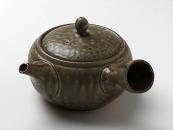 Earthenware Kyusu (Teapot: 360ml)
US$48.00
Earthenware Kyusu (Teapot: 360ml)
US$48.00
-
6
 KITTACHI MOGAKE Kyusu (handcrafted: 350ml)
US$118.00
KITTACHI MOGAKE Kyusu (handcrafted: 350ml)
US$118.00
-
7
 Essential Tea Set
US$59.50
Essential Tea Set
US$59.50
-
8
 KIJICAN (airtight container: pair: capacity 40g)
US$20.00
KIJICAN (airtight container: pair: capacity 40g)
US$20.00
-
9
 RYOKUDEI MOGAKE Kyusu (handcrafted: 300ml)
US$83.00
RYOKUDEI MOGAKE Kyusu (handcrafted: 300ml)
US$83.00
-
10
 KIKU MON Strainer Mug (Mug: 250ml)
US$40.00
KIKU MON Strainer Mug (Mug: 250ml)
US$40.00
-
11
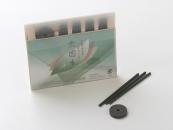 SOUEN-KOH (Japanese Tea Incense: 12 sticks)
US$21.50
SOUEN-KOH (Japanese Tea Incense: 12 sticks)
US$21.50
-
12
![[Limited] SHIKI SOUKA - pair (handcrafted Teacup) [Limited] SHIKI SOUKA - pair (handcrafted Teacup)](/images/upload/thumbnail/SHIKI-SOUKA-pair_A01.jpg) [Limited] SHIKI SOUKA - pair (handcrafted Teacup)
US$108.00
[Limited] SHIKI SOUKA - pair (handcrafted Teacup)
US$108.00
-
13
![[Recommended] MATSUBA Yunomi (Teacup:pair:100ml each) [Recommended] MATSUBA Yunomi (Teacup:pair:100ml each)](/images/upload/thumbnail/MatsubaYunomi_A01.jpg) [Recommended] MATSUBA Yunomi (Teacup:pair:100ml each)
US$29.00
[Recommended] MATSUBA Yunomi (Teacup:pair:100ml each)
US$29.00
-
14
![[Recommended] Yunomi (Teacup:pair:100ml each) [Recommended] Yunomi (Teacup:pair:100ml each)](/images/upload/thumbnail/Yunomi_A01.jpg) [Recommended] Yunomi (Teacup:pair:100ml each)
US$26.00
[Recommended] Yunomi (Teacup:pair:100ml each)
US$26.00
-
15
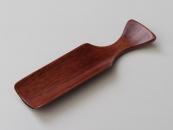 Tea Scoop HAGOITA (Sami)
US$8.50
Tea Scoop HAGOITA (Sami)
US$8.50
-
 21051 US$67.00 Teapot CLEAR - Filter Top & MANTEN Yunomi set
21051 US$67.00 Teapot CLEAR - Filter Top & MANTEN Yunomi setThis Teapot and Yunomi set is specifically designed to be convenient and easy to use. This is not only a convenient and simple design but also sophisticated and stylish. You are surely able to enjoy both iced tea, hot tea and the beautiful color of tea in your green moment with this functional and fashionable set...

-
![[Limited] HANA KESSHO GINFUJI Hohin Set (handcrafted Tea Set) [Limited] HANA KESSHO GINFUJI Hohin Set (handcrafted Tea Set)](/images/upload/thumbnail/HanaKesshohHohin_A01.jpg) Limited 21201 US$248.00 HANA KESSHO GINFUJI Hohin Set (handcrafted Tea Set)
Limited 21201 US$248.00 HANA KESSHO GINFUJI Hohin Set (handcrafted Tea Set)Hohin pleases one's palate more than thirst as the capacity is somewhat smaller than a basic Kyusu, but the flavor and aroma created is delightful. This HANA KESSHO crystal glaze porcelain set creates an aura of unique pleasant cooling sensation...

-
![[Limited] KAGETSU HAKEME Hohin Set (handcrafted Tea Set) [Limited] KAGETSU HAKEME Hohin Set (handcrafted Tea Set)](/images/upload/thumbnail/KAGTSU-HAKEME-Hohin_A01.jpg) Limited 21322 US$184.00 KAGETSU HAKEME Hohin Set (handcrafted Tea Set)
Limited 21322 US$184.00 KAGETSU HAKEME Hohin Set (handcrafted Tea Set)KAGETSU HAKEME Hohin Set is very simple, but the artist has given great care to the details of the work. White HAKEME, which means brush line pattern in Japanese, both accents and balances the warm and natural reddish-brown color of this Hohin Set...

-
 26401 US$40.00 KIKU MON Strainer Mug (Mug: 250ml)
26401 US$40.00 KIKU MON Strainer Mug (Mug: 250ml)If you have this Strainer Mug, you can enjoy Japanese green tea anywhere without teapots and tea cups. It has a lid, which is convenient to steam the tea leaves during brewing, keep the tea warm, and use as a saucer to place the strainer upon while not in use...

-
![[Limited] TOHAN - pair (GEKKA BIJIN / FUYOH) [Limited] TOHAN - pair (GEKKA BIJIN / FUYOH)](/images/upload/thumbnail/GEKKA_BIJIN_FUYO_pair_A01.jpg) Limited 22709 US$230.00 TOHAN - pair (GEKKA BIJIN / FUYOH)
Limited 22709 US$230.00 TOHAN - pair (GEKKA BIJIN / FUYOH)GEKKA BIJIN Selenicereus flower and FUYOH lotus flower are painted elegantly, vividly, and intrepidly inside of each teacup. This Yunomi has a unique special graceful aura, so that this should certainly change even your daily tea time to an extraordinary experience...

-
![[Limited] GEKKA BIJIN (handcrafted Teacup: 225ml) [Limited] GEKKA BIJIN (handcrafted Teacup: 225ml)](/images/upload/thumbnail/GEKKA_BIJIN_s_A01.jpg) Limited 22710 US$125.00 GEKKA BIJIN (handcrafted Teacup: 225ml)
Limited 22710 US$125.00 GEKKA BIJIN (handcrafted Teacup: 225ml)GEKKA BIJIN means Selenicereus flower, also translated as Queen of the Night. The flower is painted elegantly, vividly, and intrepidly on the inside of this Yunomi. Tohan Kiln's unique works are highly appreciated and viewed with awe...

-
![[Limited] ORIBE FUYOH (handcrafted Teacup: 225ml) [Limited] ORIBE FUYOH (handcrafted Teacup: 225ml)](/images/upload/thumbnail/ORIBE_FUYOH_s_A01.jpg) Limited 22711 US$125.00 ORIBE FUYOH (handcrafted Teacup: 225ml)
Limited 22711 US$125.00 ORIBE FUYOH (handcrafted Teacup: 225ml)FUYOH is one type of lotus flower, which is painted elegantly, vividly, and intrepidly inside of this teacup. Tohan Kiln's unique works are sustained by high level pottery and drawing techniques and various original elegant color glazes in over three hundred colors...

-
![[Limited] SOME AJIRO - pair (handcrafted Teacup) [Limited] SOME AJIRO - pair (handcrafted Teacup)](/images/upload/thumbnail/SOME-AJIRO-pair_A01.jpg) Limited 22715 US$230.00 SOME AJIRO - pair (handcrafted Teacup)
Limited 22715 US$230.00 SOME AJIRO - pair (handcrafted Teacup)SOME means coloring, and AJIRO means a substitute for a net. As the name suggests, AJIRO is made of wood, bamboo, grass, etc., torn into thin strips, processed and woven into a flat surface, and used for fishing as a substitute for nets in ancient times...

-
![[Limited] SOME AJIRO (handcrafted Teacup: 250ml) [Limited] SOME AJIRO (handcrafted Teacup: 250ml)](/images/upload/thumbnail/SOME-AJIRO_A01.jpg) Limited 22716 US$125.00 SOME AJIRO (handcrafted Teacup: 250ml)
Limited 22716 US$125.00 SOME AJIRO (handcrafted Teacup: 250ml)SOME means coloring, and AJIRO means a substitute for a net. As the name suggests, AJIRO is made of wood, bamboo, grass, etc., torn into thin strips, processed and woven into a flat surface, and used for fishing as a substitute for nets in ancient times...

-
![[Limited] KOHCHI SAKURA / KARAKUSA - pair(handcrafted Teacup) [Limited] KOHCHI SAKURA / KARAKUSA - pair(handcrafted Teacup)](/images/upload/thumbnail/KOHCHI-SAKURA-KARAKUSA_A01.jpg) Limited 23714 US$143.00 KOHCHI SAKURA / KARAKUSA - pair(handcrafted Teacup)
Limited 23714 US$143.00 KOHCHI SAKURA / KARAKUSA - pair(handcrafted Teacup)KOHCHI is one of the glazing names frequently used in Kyo Yaki pottery. The glossy and vivid glaze is coated outside the teacup, and the flowers and plants painted in blue color inside the teacup are well contrasted. These Yunomi teacups are vertically scraped and a line of brown color glaze is horizontally painted around the rim...

-
![[Limited] KOHCHI SAKURA (handcrafted Teacup: 175ml) [Limited] KOHCHI SAKURA (handcrafted Teacup: 175ml)](/images/upload/thumbnail/KOHCHI-SAKURA_A01.jpg) Limited 23715 US$82.00 KOHCHI SAKURA (handcrafted Teacup: 175ml)
Limited 23715 US$82.00 KOHCHI SAKURA (handcrafted Teacup: 175ml)SAKURA means cherry blossom in Japanese, and its flowers are elegantly painted inside the teacup in blue glaze. SAKURA are elegantly painted, and the brush strokes remind us of the tenderness of the cherry blossom petals. Green KOHCHI color evokes the image of fresh green leaves in early summer...

-
![[Limited] KOHCHI KARAKUSA (handcrafted Teacup: 175ml) [Limited] KOHCHI KARAKUSA (handcrafted Teacup: 175ml)](/images/upload/thumbnail/KOHCHI-KARAKUSA_A01.jpg) Limited 23716 US$82.00 KOHCHI KARAKUSA (handcrafted Teacup: 175ml)
Limited 23716 US$82.00 KOHCHI KARAKUSA (handcrafted Teacup: 175ml)KARAKUSA means sequence of flowers or arabesque design in Japanese. Airy KARAKUSA are depicted gracefully in the simple design and color, as if they are fluttering lightly. Clear blue color glaze is coated on the KARAKUSA teacup. The blue KOHCHI color reminds us of the endlessly extending summer sea and sky...

-
![[Limited] SHICHIHENGE Tea Glass - pair (handcrafted glass) [Limited] SHICHIHENGE Tea Glass - pair (handcrafted glass)](/images/upload/thumbnail/SHICHIHENGE-pair_A01.jpg) Limited 23831 US$126.00 SHICHIHENGE Tea Glass - pair (handcrafted glass)
Limited 23831 US$126.00 SHICHIHENGE Tea Glass - pair (handcrafted glass)This glass is colored yet transparent, and is not only beautiful but also heat resistant. You can pour boiling water into this heat-resistant glass or heat it in a microwave oven, yet it is thin, surprisingly light, delicate and elegant...

-
![[Limited] UCHIZOME SANSUI - pair (handcrafted Teacup) [Limited] UCHIZOME SANSUI - pair (handcrafted Teacup)](/images/upload/thumbnail/UCHIZOME-SANSUI-pair_A01.jpg) Limited 24001 US$126.00 UCHIZOME SANSUI - pair (handcrafted Teacup)
Limited 24001 US$126.00 UCHIZOME SANSUI - pair (handcrafted Teacup)At first glance this Yunomi teacup may appear simple and plain, but it takes much time and effort to create. The ancient landscape is drawn in blue glaze inside the cup. The thin and lightweight porcelain enhances the good flavor of the tea...

-
![[Limited] UCHIZOME SANSUI (handcrafted Teacup: 170ml) [Limited] UCHIZOME SANSUI (handcrafted Teacup: 170ml)](/images/upload/thumbnail/UCHIZOME-SANSUI_A01.jpg) Limited 24002 US$72.00 UCHIZOME SANSUI (handcrafted Teacup: 170ml)
Limited 24002 US$72.00 UCHIZOME SANSUI (handcrafted Teacup: 170ml)At first glance this Yunomi teacup may appear simple and plain, but it takes much time and effort to create. The ancient landscape is drawn in blue glaze inside the cup. The thin and lightweight porcelain enhances the good flavor of the tea...

-
![[Limited] HANA KESSHO TamaYunomi -Pair (handcrafted Teacup) [Limited] HANA KESSHO TamaYunomi -Pair (handcrafted Teacup)](/images/upload/thumbnail/HANA_KESSHO_Tama_Pair_A01.jpg) Limited 24223 US$108.00 HANA KESSHO TamaYunomi -Pair (handcrafted Teacup)
Limited 24223 US$108.00 HANA KESSHO TamaYunomi -Pair (handcrafted Teacup)This item is finished by the technique called Crystal glaze. HANA of this name means flower and KESSHO means crystal in Japanese. This porcelain Yunomi creates an aura of unique pleasant cooling sensation. It is said that it is very difficult for porcelain or earthenware to create a cooling sensation...

-
![[Limited] HANA KESSHO TamaYunomi White (handcrafted: 180ml) [Limited] HANA KESSHO TamaYunomi White (handcrafted: 180ml)](/images/upload/thumbnail/HANA_KESSHO_Tama_SHIRO_A01.jpg) Limited 24224 US$62.00 HANA KESSHO TamaYunomi White (handcrafted: 180ml)
Limited 24224 US$62.00 HANA KESSHO TamaYunomi White (handcrafted: 180ml)This item is finished by the technique called Crystal glaze. HANA of this name means flower and KESSHO means crystal in Japanese. This porcelain Yunomi creates an aura of unique pleasant cooling sensation. It is said that it is very difficult for porcelain or earthenware to create a cooling sensation...

-
![[Limited] HANA KESSHO TamaYunomi Blue (handcrafted: 180ml) [Limited] HANA KESSHO TamaYunomi Blue (handcrafted: 180ml)](/images/upload/thumbnail/HANA_KESSHO_Tama_Blue_A01.jpg) Limited 24225 US$62.00 HANA KESSHO TamaYunomi Blue (handcrafted: 180ml)
Limited 24225 US$62.00 HANA KESSHO TamaYunomi Blue (handcrafted: 180ml)This item is finished by the technique called Crystal glaze. HANA of this name means flower and KESSHO means crystal in Japanese. This porcelain Yunomi creates an aura of unique pleasant cooling sensation. It is said that it is very difficult for porcelain or earthenware to create a cooling sensation...

-
![[Limited] FUJI ni SAKURA - pair (handcrafted Teacup) [Limited] FUJI ni SAKURA - pair (handcrafted Teacup)](/images/upload/thumbnail/FUJI-ni-SAKURA-pair_A01.jpg) Limited 24231 US$108.00 FUJI ni SAKURA - pair (handcrafted Teacup)
Limited 24231 US$108.00 FUJI ni SAKURA - pair (handcrafted Teacup)This tea cup is refined and elaborate work. Beautiful and lively SAKURA cherry blossoms, which are colored white and pink, and Mt. Fuji are carefully and boldly drawn on the surface of this cup. All SAKURA cherry blossoms are colored in gold, which adds elegance and luxuriousness to this tea cup...

-
![[Limited] FUJI ni SAKURA (handcrafted Teacup: 200ml) [Limited] FUJI ni SAKURA (handcrafted Teacup: 200ml)](/images/upload/thumbnail/FUJI-ni-SAKURA_A01.jpg) Limited 24232 US$62.00 FUJI ni SAKURA (handcrafted Teacup: 200ml)
Limited 24232 US$62.00 FUJI ni SAKURA (handcrafted Teacup: 200ml)This tea cup is refined and elaborate work. Beautiful and lively SAKURA cherry blossoms, which are colored white and pink, and Mt. Fuji are carefully and boldly drawn on the surface of this cup. All SAKURA cherry blossoms are colored in gold, which adds elegance and luxuriousness to this tea cup...

-
![[Limited] HANA KESSHO Flared Yunomi -pair (handcraftedTeacup) [Limited] HANA KESSHO Flared Yunomi -pair (handcraftedTeacup)](/images/upload/thumbnail/HANA_KESSHO_Flared_pair_A01.jpg) Limited 24239 US$108.00 HANA KESSHO Flared Yunomi -pair (handcraftedTeacup)
Limited 24239 US$108.00 HANA KESSHO Flared Yunomi -pair (handcraftedTeacup)This item is finished by the technique called Crystal glaze. HANA of this name means flower and KESSHO means crystal in Japanese. The teacup rim is beautifully flared, middle of side is full, and bottom is tucked. The curve from the rim to base is not only beautiful, but also lovely to hold in your hands...

-
![[Limited] HANA KESSHO Flared Yunomi SHIROJI AO (handcrafted) [Limited] HANA KESSHO Flared Yunomi SHIROJI AO (handcrafted)](/images/upload/thumbnail/HANA_KESSHO_Flared_SHIOJIAO_A01.jpg) Limited 24240 US$62.00 HANA KESSHO Flared Yunomi SHIROJI AO (handcrafted)
Limited 24240 US$62.00 HANA KESSHO Flared Yunomi SHIROJI AO (handcrafted)This item is finished by the technique called Crystal glaze. HANA of this name means flower and KESSHO means crystal in Japanese. The teacup rim is beautifully flared, middle of side is full, and bottom is tucked. The curve from the rim to base is not only beautiful, but also lovely to hold in your hands...

-
![[Limited] HANA KESSHO Flared Yunomi Blue (handcrafted: 210ml) [Limited] HANA KESSHO Flared Yunomi Blue (handcrafted: 210ml)](/images/upload/thumbnail/HANA_KESSHO_Flared_Blue_A01.jpg) Limited 24241 US$62.00 HANA KESSHO Flared Yunomi Blue (handcrafted: 210ml)
Limited 24241 US$62.00 HANA KESSHO Flared Yunomi Blue (handcrafted: 210ml)This item is finished by the technique called Crystal glaze. HANA of this name means flower and KESSHO means crystal in Japanese. The teacup rim is beautifully flared, middle of side is full, and bottom is tucked. The curve from the rim to base is not only beautiful, but also lovely to hold in your hands...

-
![[Limited] KOBIKI OSHIDORI - pair (handcrafted Teacup) [Limited] KOBIKI OSHIDORI - pair (handcrafted Teacup)](/images/upload/thumbnail/KOBIKI-OSHIDORI-pair_A01.jpg) Limited 24258 US$108.00 KOBIKI OSHIDORI - pair (handcrafted Teacup)
Limited 24258 US$108.00 KOBIKI OSHIDORI - pair (handcrafted Teacup)KOBIKI is one of the Japanese traditional pottery techniques, coating with glaze made from white clay. Two lovebirds, which are regarded as an auspicious motif in Japan, are painted in a lovely manner. TAKARA MON Yunomi is lyrically and exquisitely decorated with auspicious motifs...

-
![[Limited] KOBIKI OSHIDORI (handcrafted Teacup: 150ml) [Limited] KOBIKI OSHIDORI (handcrafted Teacup: 150ml)](/images/upload/thumbnail/KOBIKI-OSHIDORI_A01.jpg) Limited 24259 US$62.00 KOBIKI OSHIDORI (handcrafted Teacup: 150ml)
Limited 24259 US$62.00 KOBIKI OSHIDORI (handcrafted Teacup: 150ml)Two lovebirds, which are regarded as an auspicious motif in Japan, are painted in a lovely manner. The male lovebird, which has colorful feathers and head, and the female lovebird, which is colored in light gray, swim in the river together...

-
![[Limited] INKA MON - SHIRO (handcrafted Multi-cup: 150ml) [Limited] INKA MON - SHIRO (handcrafted Multi-cup: 150ml)](/images/upload/thumbnail/INKA-MON-white_A01.jpg) Limited 24628 US$53.00 INKA MON - SHIRO (handcrafted Multi-cup: 150ml)
Limited 24628 US$53.00 INKA MON - SHIRO (handcrafted Multi-cup: 150ml)Japanese traditional and popular flowers are decorated on this natural and simple texture multi-cup. Flower stamps colored in white bloom on the natural clay earthenware. The flared shape also adds accent not only to the cup but also to the flowers...

-
![[Limited] HAIYU SOGI - pair (handcrafted Teacup) [Limited] HAIYU SOGI - pair (handcrafted Teacup)](/images/upload/thumbnail/HAIYU-SOGI-pair_A01.jpg) Limited 24629 US$93.00 HAIYU SOGI - pair (handcrafted Teacup)
Limited 24629 US$93.00 HAIYU SOGI - pair (handcrafted Teacup)HAIYU means ash glaze in Japanese. This HAIYU ash glaze produces elegant pale green and light blue colors as shown in the pictures. These beautiful colors are created by reduction firing of iron constituents in the glaze. This beautiful color is one of the typical glazes in this Dainichi Kiln...

-
![[Limited] HAIYU SOGI (handcrafted Teacup: 250ml) [Limited] HAIYU SOGI (handcrafted Teacup: 250ml)](/images/upload/thumbnail/HAIYU-SOGI_A01.jpg) Limited 24630 US$53.00 HAIYU SOGI (handcrafted Teacup: 250ml)
Limited 24630 US$53.00 HAIYU SOGI (handcrafted Teacup: 250ml)SOGI means scraping away in Japanese. As its name suggests, this teacup is boldly scraped, and the pale green and light blue color glaze coats the exterior of the teacup. It seems that this teacup is simple at a glance, but it takes much time and effort to create...

-
 Limited 26205 US$75.00 TETSUSAN SENBORI Yunomi - pair (handcrafted Teacup)
Limited 26205 US$75.00 TETSUSAN SENBORI Yunomi - pair (handcrafted Teacup)TETSU means iron, and SAN means scatter. As the name expresses, you can see black dots formed when the iron content in the clay appears on the surface of the cup. This tea cup is made from clay that contains iron and is the potteries' original blend mainly collected in Shigaraki...

-
![[Limited] SESERAGI no KAZE - pair (handcrafted Teacup) [Limited] SESERAGI no KAZE - pair (handcrafted Teacup)](/images/upload/thumbnail/SESERAGI-no-KAZE_A01.jpg) Limited 26311 US$52.00 SESERAGI no KAZE - pair (handcrafted Teacup)
Limited 26311 US$52.00 SESERAGI no KAZE - pair (handcrafted Teacup)SESERAGI means the sound of flowing water, such as shallow water, and KAZE means wind in Japanese. As the name suggests, the refreshing pale blue color of the cup brings to the eye the flow of cool river water and the wind blowing there.

-
 26401 US$40.00 KIKU MON Strainer Mug (Mug: 250ml)
26401 US$40.00 KIKU MON Strainer Mug (Mug: 250ml)If you have this Strainer Mug, you can enjoy Japanese green tea anywhere without teapots and tea cups. It has a lid, which is convenient to steam the tea leaves during brewing, keep the tea warm, and use as a saucer to place the strainer upon while not in use...

-
![[Tale of Genji] WAKAMURASAKI / SUMA Yunomi -pair(handcrafted) [Tale of Genji] WAKAMURASAKI / SUMA Yunomi -pair(handcrafted)](/images/upload/thumbnail/WAKAMURASAKI-SUMA-Yunomi_A01.jpg) Limited 27011 US$439.00 WAKAMURASAKI / SUMA Yunomi -pair(handcrafted)
Limited 27011 US$439.00 WAKAMURASAKI / SUMA Yunomi -pair(handcrafted)WAKA means young, and MURASAKI means purple color, but its meaning in this story is the name of the woman whom Hikaru Genji loved. SUMA is the story about Hikaru Genji’s withdrawal. Because he had a relationship with a woman who was an opposition figure in the Imperial Palace, he voluntarily withdrew from the palace and decided to live in SUMA...

-
![[Tale of Genji] WAKAMURASAKI (handcrafted Teacup: 130ml) [Tale of Genji] WAKAMURASAKI (handcrafted Teacup: 130ml)](/images/upload/thumbnail/WAKAMURASAKI-Yunomi_A01.jpg) Limited 27012 US$252.00 WAKAMURASAKI (handcrafted Teacup: 130ml)
Limited 27012 US$252.00 WAKAMURASAKI (handcrafted Teacup: 130ml)WAKA means young, and MURASAKI means purple color, but its meaning in this story is the name of the woman whom Hikaru Genji loved. This teacup portrays the gorgeous and pleasant scene of springtime in Japan, during which Hikaru Genji had a faithful encounter with Murasaki no Ue...

-
![[Tale of Genji] SUMA (handcrafted Teacup: 130ml) [Tale of Genji] SUMA (handcrafted Teacup: 130ml)](/images/upload/thumbnail/SUMA-Yunomi_A01.jpg) Limited 27013 US$252.00 SUMA (handcrafted Teacup: 130ml)
Limited 27013 US$252.00 SUMA (handcrafted Teacup: 130ml)SUMA is the story about Hikaru Genji’s withdrawal. Because he had a relationship with a woman who was an opposition figure in the Imperial Palace, he voluntarily withdrew from the palace and decided to live in SUMA, which was far from the capital...

-
![[Limited] SHISUI MON - pair (handcrafted Teacup) [Limited] SHISUI MON - pair (handcrafted Teacup)](/images/upload/thumbnail/SHISUI-MON-pair_A01.jpg) Limited 27355 US$142.00 SHISUI MON - pair (handcrafted Teacup)
Limited 27355 US$142.00 SHISUI MON - pair (handcrafted Teacup)SHISUI MON Yunomi is beautiful and sublime by well-balanced shape and graceful decoration. These Yunomi are created by a technique called MISHIMA. Before shaped clay is dried, patterns are marked by stamp stick carved with flowers or another similar design. It is one of the traditional techniques of Kyo Yaki.

-
![[Limited] SHISUI MON (handcrafted Teacup: 110ml) [Limited] SHISUI MON (handcrafted Teacup: 110ml)](/images/upload/thumbnail/SHISUI-MON_A01.jpg) Limited 27356 US$82.00 SHISUI MON (handcrafted Teacup: 110ml)
Limited 27356 US$82.00 SHISUI MON (handcrafted Teacup: 110ml)SHISUI MON Yunomi is beautiful and sublime by well-balanced shape and graceful decoration. These Yunomi are created by a technique called MISHIMA. Before shaped clay is dried, patterns are marked by stamp stick carved with flowers or another similar design. It is one of the traditional techniques of Kyo Yaki.

-
![[Limited] HANA SOUKA - pair (CLOVER / CANOLA) [Limited] HANA SOUKA - pair (CLOVER / CANOLA)](/images/upload/thumbnail/HANA-SOUKA-clover-CANOLA_A01.jpg) Limited 27512 US$87.00 HANA SOUKA - pair (CLOVER / CANOLA)
Limited 27512 US$87.00 HANA SOUKA - pair (CLOVER / CANOLA)These Yunomi teacups are characterized by the harmony between the vigor of the growing CLOVER, the yellow CANOLA flowers blooming in the cool atmosphere, and the delicacy of the refined white background. The atmosphere is very light and airy, like the soft breeze that blows in spring...

-
![[Top Choice!] SOME KAMON Yunomi (handcrafted Teacup: pair) [Top Choice!] SOME KAMON Yunomi (handcrafted Teacup: pair)](/images/upload/thumbnail/KAMON_A01.jpg) Top Choice! 27712 US$68.00 SOME KAMON Yunomi (handcrafted Teacup: pair)
Top Choice! 27712 US$68.00 SOME KAMON Yunomi (handcrafted Teacup: pair)Just at first glance, you may possibly feel that this Yunomi is plain and simple. However, the artist has achieved sophistication without ostentatious garnish. In addition, the thin and lightweight porcelain enhances the good flavor of tea...

-
![[Limited] SAKURA Yunomi - pair (handcrafted Teacup) [Limited] SAKURA Yunomi - pair (handcrafted Teacup)](/images/upload/thumbnail/SAKURA-Yunomi_A01.jpg) Limited 27742 US$52.00 SAKURA Yunomi - pair (handcrafted Teacup)
Limited 27742 US$52.00 SAKURA Yunomi - pair (handcrafted Teacup)SAKURA teacups have a sophisticated and modern design. The inside of the teacup is shaped like cherry blossom petals. At first glance, the teacup appears to be a simple white teacup, but when tea is poured into it, the shape of a cherry blossom emerges.

-
 28141 US$189.00 CHOH to SAKURA Kyusu (handcrafted: 300ml)
28141 US$189.00 CHOH to SAKURA Kyusu (handcrafted: 300ml)This Kyusu gives the impression of a spring breeze with butterflies and cherry blossom petals. You will certainly feel that the room and atmosphere around this Kyusu are calm, relaxed, and leisurely. To consider the effort and technique on this Kyusu, this price is absolutely reasonable...

-
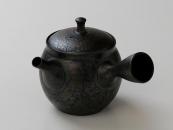 28151 US$168.00 TENMOKU Kyusu (handcrafted: 300ml)
28151 US$168.00 TENMOKU Kyusu (handcrafted: 300ml)TENMOKU is an iron glaze traditionally known for its impenetrable and elusive nature. It was said that if an artisan tried to pursue TENMOKU glaze, they would become insolvent. Unique pattern on the surface of the teapot is similar to the color inside a sea shell and seven bright color changes occur according the position from which it is viewed...

-
 28161 US$118.00 KITTACHI MOGAKE Kyusu (handcrafted: 350ml)
28161 US$118.00 KITTACHI MOGAKE Kyusu (handcrafted: 350ml)The technique called MOGAKE is used for this Kyusu. MO means seaweed and GAKE means wrapping in Japanese. As the name suggests, this Kyusu is fired in the kiln while wrapped with seaweed. Salt contained in the seaweed creates the unique color pattern due to the chemical reaction...

-
 28171 US$103.00 SHIROTSUCHI Kyusu - FUJIGATA (handcrafted: 300ml)
28171 US$103.00 SHIROTSUCHI Kyusu - FUJIGATA (handcrafted: 300ml)SHIROTSUCHI refers to the white color of this Kyusu. Usually, Kyusu are SHUDEI red, brown or gray, but this Kyusu has a mild white color. This color was developed to show the beautiful green color of tea. Its whiteness, developed after about two years of trial and error, is unmatched by any other Kyusu. The mountain shape of the Kyusu and its characteristic white color harmonize beautifully to create a sense of gentleness and charm...

-
 28172 US$103.00 KUROTSUCHI Kyusu - TSUTSUGATA (handcrafted: 300ml)
28172 US$103.00 KUROTSUCHI Kyusu - TSUTSUGATA (handcrafted: 300ml)KUROTSUCHI refers to the black color of this teapot. Normally, most teapots are SHUDEI red or brown, but this teapot has a simple matte black color (grayish black). This color is produced by sealing the kiln at high temperatures and incomplete combustion with little oxygen. The carbon generated from the fuel in the kiln is absorbed by the Kyusu, resulting in a black color...

-
 28173 US$103.00 YAKISHIME HIRAGATA Kyusu (handcrafted: 300ml)
28173 US$103.00 YAKISHIME HIRAGATA Kyusu (handcrafted: 300ml)This Kyusu has a unique color, texture and distinctive form. The warm earthen color and cute flat shape are wonderfully matched and bring an elegant and sophisticated atmosphere. It is very time-consuming to produce this Kyusu and expert skills are required. This unique Kyusu teapot, created by a master potter, is sure to fascinate you...

-
 28181 US$83.00 RYOKUDEI MOGAKE Kyusu (handcrafted: 300ml)
28181 US$83.00 RYOKUDEI MOGAKE Kyusu (handcrafted: 300ml)This Kyusu has a unique green color and texture. The green color and rounded shape are wonderfully matched and bring an elegant and sophisticated atmosphere. It is very time-consuming to produce this Kyusu and expert skills are required. This unique teapot created by skilled potters will surely fascinate you...

-
 29301 US$22.00 SS Strainer
29301 US$22.00 SS StrainerIts columnar shape and wide bottom create enough space so the tea leaves can fully expand during brewing to flavor the tea, providing almost the same taste as brewing by Kyusu teapot. It has a handle, which makes it very easy to use. With this strainer, you can brew our genuine green tea three times, which is also the same as with a Kyusu teapot...

-
 29065 US$110.00 KEYAKI KURO MEHAJIKI (handcrafted container; capacity 60g)
29065 US$110.00 KEYAKI KURO MEHAJIKI (handcrafted container; capacity 60g)The wood is from the Zelkova tree, known as KEYAKI in Japan. Japanese artisans use KEYAKI for traditional wooden lacquer because the wood is strong and the grain is quite beautiful. KURO means black, and MEHAJIKI is one of the craft techniques used to paint lacquer. The glossy and deep black color evokes a noble and majestic atmosphere...

-
 29066 US$105.00 KEYAKI KOMANURI (handcrafted container; capacity 60g)
29066 US$105.00 KEYAKI KOMANURI (handcrafted container; capacity 60g)The stripe design on this tea container is called KOMA NURI in Japanese. KOMA means a toy spinning top, and NURI means painting in Japanese. KOMA is a traditional toy, played with during the New Year holiday celebration in Japan, and is said to be an auspicious item...

-
 29072 US$43.00 DOHKAN Copper Chazutsu for 40g tea (handcrafted container)
29072 US$43.00 DOHKAN Copper Chazutsu for 40g tea (handcrafted container)This Copper Matcha Container is handmade container for Matcha which we Hibiki-an specially order for our customers. Copper container is very suitable for the preservation of Matcha powder since this is high air-tightness and protected against moisture, and copper itself has an antibacterial effect...

-
![[New] SEN SORIGATA Chataku (handcrafted saucer: pair) [New] SEN SORIGATA Chataku (handcrafted saucer: pair)](/images/upload/thumbnail/SEN-SORIGATA-Chataku_A01.jpg) New 29103 US$84.00 SEN SORIGATA Chataku (handcrafted saucer: pair)
New 29103 US$84.00 SEN SORIGATA Chataku (handcrafted saucer: pair)SEN means castor aralia and SORIGATA means arched shape. SEN has a beautiful annual ring pattern similar to that of zelkova, and is valued as a building and furniture material. Lacquer is applied using a traditional technique called MEHAJIKI NURI so that this beautiful grain remains.

-
![[New] TSUCHIME SUZU KABUSE Tea Scoop (SAMI) [New] TSUCHIME SUZU KABUSE Tea Scoop (SAMI)](/images/upload/thumbnail/TSUCHIME_SUZU_KABUSE_Tea_Scoop_A01.jpg) New 29150 US$37.00 TSUCHIME SUZU KABUSE Tea Scoop (SAMI)
New 29150 US$37.00 TSUCHIME SUZU KABUSE Tea Scoop (SAMI)A tea scoop, known as SAMI in Japanese, is a very useful tool for measuring tea leaves from a Chazutsu or other tea container and when placing tea leaves into the Kyusu teapot. This SAMI has a hammered pattern called TSUCHIME, which gives it a luxurious feel. It also brings a traditional Japanese atmosphere to tea time.

-
_A01.jpg) 29151 US$32.00 TSUCHIME Red Copper Tea Scoop (Sami)
29151 US$32.00 TSUCHIME Red Copper Tea Scoop (Sami)Tea Scoop is very useful for measuring tea leaves from Chazutsu or other tea container and when placing tea leaves into the Kyusu teapot. This SAMI has a hammered pattern called TSUCHIME, which gives it a luxurious feel. It also brings a traditional Japanese atmosphere to tea time...

-
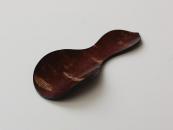 29152 US$13.50 Tea Scoop HYOTAN (Sami)
29152 US$13.50 Tea Scoop HYOTAN (Sami)Our Tea Scoop is very useful for measuring tea leaves from Chazutsu or other tea container and when placing tea leaves into the Kyusu teapot. HYOTAN, which means calabash (bottle gourd) in Japanese, has been a traditional good luck charm since ancient times in Japan...

-
 29153 US$10.50 Tea Scoop YAMA ZAKURA (Sami)
29153 US$10.50 Tea Scoop YAMA ZAKURA (Sami)Our Tea Scoop is very useful for measuring tea leaves from Chazutsu or other tea container and when placing tea leaves into the Kyusu teapot. YAMA ZAKURA means mountain cherry blossom in Japanese. The surface of this Tea Scoop is covered with mountain cherry bark, which is polished to make a smooth texture...

-
 29155 US$8.50 Tea Scoop HAGOITA (Sami)
29155 US$8.50 Tea Scoop HAGOITA (Sami)Our Tea Scoop is very useful for measuring tea leaves from Chazutsu or other tea container and when placing tea leaves into the Kyusu teapot. HAGOITA is a wooden paddle used in HANETSUKI Japanese battledore, a traditional game historically played on auspicious occasions like New Year's holiday in Japan...

-
 29301 US$22.00 SS Strainer
29301 US$22.00 SS StrainerIts columnar shape and wide bottom create enough space so the tea leaves can fully expand during brewing to flavor the tea, providing almost the same taste as brewing by Kyusu teapot. It has a handle, which makes it very easy to use. With this strainer, you can brew our genuine green tea three times, which is also the same as with a Kyusu teapot...

-
![[Try it!] Storage Clip for Tea Package (a set of three) [Try it!] Storage Clip for Tea Package (a set of three)](/images/upload/thumbnail/Storage_Clip_A01.jpg) Try it! 29321 US$10.50 Storage Clip for Tea Package (a set of three)
Try it! 29321 US$10.50 Storage Clip for Tea Package (a set of three)This clip is suitable for closing the tea package for storage of daily use tea leaves. The way to use this clip is to fasten the tea package with it, as shown in the picture. This clip is not only functional but also stylish. Beautiful and delicate designs of traditional Japanese scenes and flowers decorate each clip. You will enjoy three designs...

-
29341 US$28.50 1-Minute SUNADOKEI (handcrafted sandglass)
This sandglass is a 1-minute tea timer. Pale green color sand tells you when 1 minute has passed. The sand inside was designed to be similar to the color of fine tea. Japanese green tea should be brewed for a specific length of time for ideal flavor. Sencha should brew for 1 minute, and Gyokuro should brew for 1.5 to 2 minutes.

-
29342 US$29.50 2-Minute SUNADOKEI (handcrafted sandglass)
This sandglass is a 2-minute tea timer. Purple color sand tells you when 2 minutes have passed. In the 7th century in Japan, purple was the color of the highest rank in a system of status. recognized as a color that gives the impression of nobility and elegance. 2 minutes is the best time to brew gyokuro, the highest grade of Japanese green tea. Japanese green tea should be brewed for a specific length of time for ideal flavor. Sencha should brew for 1 minute, and Gyokuro should brew for 1.5 to 2 minutes.









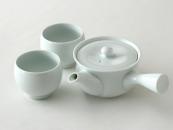
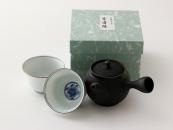
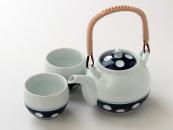


![[Limited] SHOSOIN - pair (handcrafted Teacup) [Limited] SHOSOIN - pair (handcrafted Teacup)](/images/upload/thumbnail/SHOSOIN-pair_A01.jpg)
![[Limited] SHOSOIN (handcrafted Teacup: 170ml) [Limited] SHOSOIN (handcrafted Teacup: 170ml)](/images/upload/thumbnail/SHOSOIN_A01.jpg)
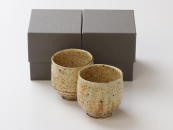

![[Limited] SHICHIHENGE Tea Glass (handcrafted glass: 100ml) [Limited] SHICHIHENGE Tea Glass (handcrafted glass: 100ml)](/images/upload/thumbnail/SHICHIHENGE_A01.jpg)


![[Limited] HANA MISHIMA Yunomi - pair (handcrafted Teacup) [Limited] HANA MISHIMA Yunomi - pair (handcrafted Teacup)](/images/upload/thumbnail/HANAMISHIMA-Yunomi-pair_A01.jpg)
![[Limited] HANA MISHIMA Yunomi (handcrafted Teacup: 200ml) [Limited] HANA MISHIMA Yunomi (handcrafted Teacup: 200ml)](/images/upload/thumbnail/HANAMISHIMA-Yunomi_A01.jpg)

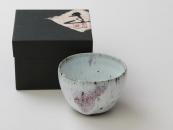
![[Limited] IN BLUE Yunomi - pair (handcrafted Teacup) [Limited] IN BLUE Yunomi - pair (handcrafted Teacup)](/images/upload/thumbnail/IN-BLUE-Yunomi-pair_A01.jpg)
![[Limited] IN BLUE Yunomi (handcrafted Teacup: 150ml) [Limited] IN BLUE Yunomi (handcrafted Teacup: 150ml)](/images/upload/thumbnail/IN-BLUE-Yunomi_A01.jpg)


![[Limited] ORIBE MENTORI - pair (handcrafted Teacup) [Limited] ORIBE MENTORI - pair (handcrafted Teacup)](/images/upload/thumbnail/ORIBE-MENTORI-Yunomi-pair_A01.jpg)
![[Limited] ORIBE MENTORI (handcrafted Teacup: 175ml) [Limited] ORIBE MENTORI (handcrafted Teacup: 175ml)](/images/upload/thumbnail/ORIBE-MENTORI-Yunomi_A01.jpg)
![[Limited] YU RYU SAI - blue - pair (handcrafted Teacup) [Limited] YU RYU SAI - blue - pair (handcrafted Teacup)](/images/upload/thumbnail/YU-RYU-SAI-blue-pair_A01.jpg)
![[Limited] YU RYU SAI - blue (handcrafted Teacup: 200ml) [Limited] YU RYU SAI - blue (handcrafted Teacup: 200ml)](/images/upload/thumbnail/YU-RYU-SAI-blue_A01.jpg)
![[Limited] SHIKI SOUKA (handcrafted Teacup: 250ml) [Limited] SHIKI SOUKA (handcrafted Teacup: 250ml)](/images/upload/thumbnail/SHIKI-SOUKA_A01.jpg)
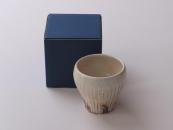

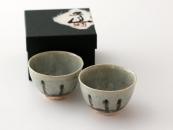





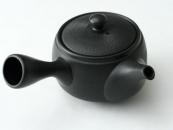








![[New] TSUCHIME SUZU KABUSE Chazutsu 150g (premium container) [New] TSUCHIME SUZU KABUSE Chazutsu 150g (premium container)](/images/upload/thumbnail/TSUCHIME-SUZU-KABUSE-Chazutsu_A01.jpg)

![[New] TSUCHIME SUZU KABUSE Chataku (premium saucer: pair) [New] TSUCHIME SUZU KABUSE Chataku (premium saucer: pair)](/images/upload/thumbnail/TSUCHIME_SUZU_KABUSE_Chataku_A01.jpg)
![[New] ZOUKOKU Chataku (handcrafted saucer: pair) [New] ZOUKOKU Chataku (handcrafted saucer: pair)](/images/upload/thumbnail/ZOUKOKU-Chataku_A01.jpg)


